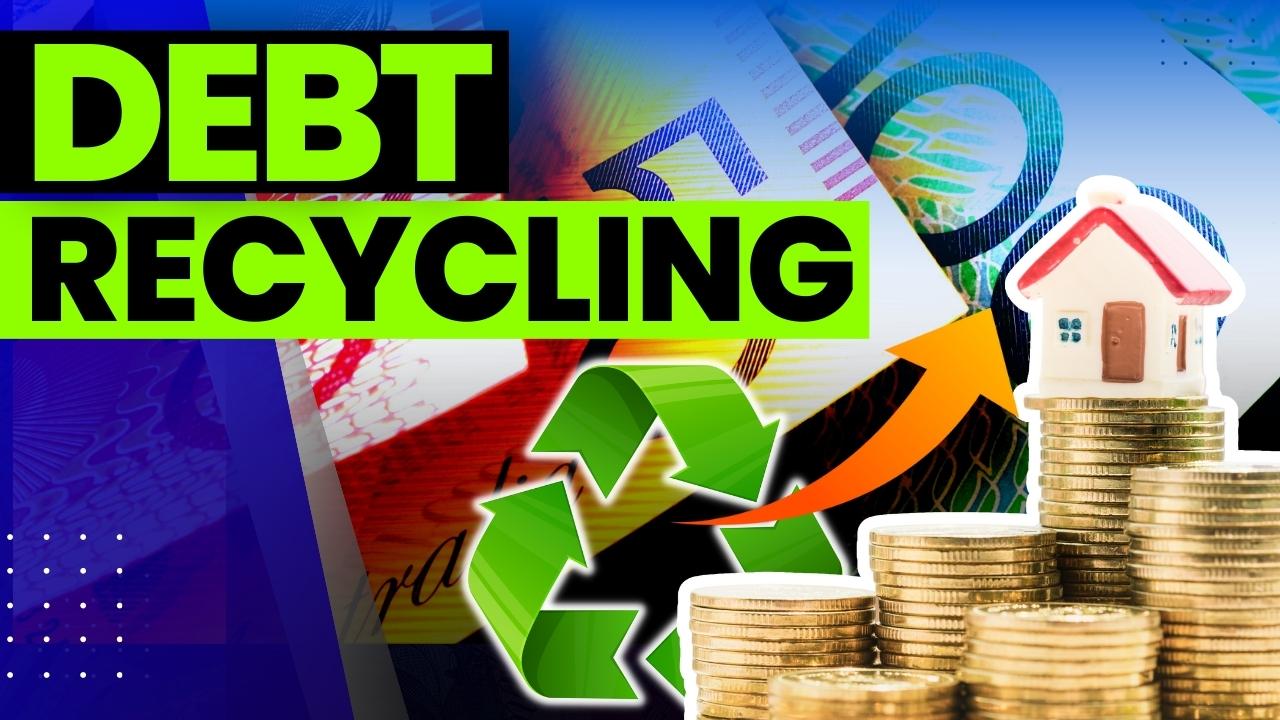Debt recycling is a powerful financial strategy that allows homeowners to optimize the potential of their property equity. By understanding the concept of debt recycling and its mechanics, homeowners can take advantage of their home equity for various financial benefits. However, it is important to consider the risks and important factors before implementing this strategy. In this article, we will explore the ins and outs of debt recycling and provide a step-by-step guide on how to implement it effectively.
Understanding the Concept of Debt Recycling
Debt recycling is a strategy that involves converting non-deductible debt, such as a mortgage, into deductible debt. This process allows homeowners to leverage their property equity to potentially create an income-producing investment portfolio.
When it comes to debt recycling example, it’s essential to have a clear understanding of how it can benefit your financial situation in the long run. By making strategic decisions about your debt and investments, you can not only reduce your tax liability but also build wealth over time.
Defining Debt Recycling
In simple terms, debt recycling is the process of using the equity in your home to invest in income-producing assets. By doing so, homeowners can shift their debt from non-deductible to deductible, potentially reducing their tax liability.

One of the key advantages of debt recycling is the ability to turn what was once considered a liability (your mortgage) into a valuable asset that generates income. This shift in mindset can transform the way you approach your finances and pave the way for long-term wealth accumulation.
See Also: Integrating Debt Recycling into Your Financial Plan
The Mechanics of Debt Recycling
The mechanics of debt recycling involve using the equity in your home to either pay off non-deductible debt or invest in income-producing assets. Through careful financial planning, homeowners can strategically manage their debt and create a more favorable financial outlook.
It’s important to note that debt recycling is not a one-size-fits-all solution and requires a thorough assessment of your financial goals and risk tolerance. By working closely with financial advisors and experts in the field, you can tailor a debt recycling strategy that aligns with your unique circumstances and sets you on the path towards financial success.
The Role of Home Equity in Debt Recycling
Home equity plays a crucial role in debt recycling. It represents the value of your property that you truly own, minus any outstanding mortgage balance.
When it comes to debt recycling, home equity can be a powerful financial tool. By leveraging the equity in your home, you can potentially consolidate high-interest debts into a lower interest rate, such as your mortgage. This strategy can help you save money on interest payments and pay off your debts more efficiently.
What is Home Equity?
Home equity is essentially the wealth you have built up in your home. It is calculated by subtracting the outstanding mortgage amount from the current market value of your property.
Building home equity can be a result of various factors, including property appreciation, renovations that increase the value of your home, and paying down your mortgage principal. The more home equity you have, the more financial flexibility you may have when it comes to managing your debts.
How to Calculate Your Home Equity
To calculate your home equity, subtract your outstanding mortgage balance from the current market value of your property. The resulting amount represents your available equity that can be utilized for debt recycling.
It’s important to keep in mind that lenders typically have limits on how much of your home equity you can borrow against. Understanding your home equity position and the terms of debt recycling can help you make informed decisions about managing your finances effectively.
The Benefits of Debt Recycling for Homeowners
Debt recycling offers several financial advantages for homeowners who are looking to maximize their property equity.
When it comes to debt recycling, the benefits extend beyond just financial gains. Homeowners who engage in debt recycling often find themselves more financially educated and aware of their investment options. This process encourages individuals to take a proactive approach to managing their finances and exploring different investment opportunities.
Financial Advantages of Debt Recycling
One of the main financial advantages of debt recycling is the potential to reduce your tax liability. By converting non-deductible debt into deductible debt, you may be able to claim tax deductions on the interest paid on the investment loan.
Moreover, debt recycling empowers homeowners to diversify their investment portfolio, spreading their risk across different asset classes. This diversification not only helps in mitigating risk but also opens up opportunities for potential higher returns on investments.
Additionally, debt recycling allows homeowners to build an income-producing investment portfolio, potentially generating additional wealth over the long term.
Long-term Benefits of Debt Recycling
Over the long term, debt recycling can help homeowners create a more secure financial future. By strategically managing their debt and investing in income-producing assets, homeowners can potentially increase their overall net worth.
Furthermore, the discipline and financial acumen gained through debt recycling can have a lasting impact on homeowners’ financial habits. It often leads to a greater sense of financial security and confidence in making informed investment decisions.
Risks and Considerations
While debt recycling offers numerous benefits, it is important to be aware of the potential risks and important factors to consider before implementing this strategy.
Debt recycling is a financial strategy that involves borrowing against the equity in your property to invest in income-producing assets. By doing so, you can potentially increase your investment portfolio and reduce non-deductible debt over time.
One of the main risks of debt recycling is the potential for investment losses. Market fluctuations can impact the performance of income-producing assets, potentially resulting in financial loss. It is essential to have a diversified investment portfolio to mitigate this risk and ensure long-term financial stability.
Furthermore, debt recycling requires careful financial planning and discipline. It is crucial to ensure that you have a solid investment strategy and the ability to service your investment loan. Failure to manage your debt effectively can lead to financial strain and impact your overall financial well-being.
Potential Risks
One of the main risks of debt recycling is the potential for investment losses. Market fluctuations can impact the performance of income-producing assets, potentially resulting in financial loss.
Furthermore, debt recycling requires careful financial planning and discipline. It is crucial to ensure that you have a solid investment strategy and the ability to service your investment loan.
Before diving into debt recycling, it is important to consider factors such as your risk tolerance, investment goals, and financial stability. It is advisable to seek professional financial advice to assess your specific circumstances and determine if debt recycling is suitable for you.
Additionally, understanding the tax implications of debt recycling is vital. Interest on investment loans may be tax-deductible, but it is essential to comply with tax laws and regulations to avoid any penalties or legal issues.

Steps to Implement
Implementing debt recycling requires careful preparation and an understanding of the process involved.
Preparing for Debt Recycling
Prior to implementing debt recycling, it is crucial to assess your current financial situation, including your outstanding mortgage balance, property value, and investment goals. You should also ensure that you have a solid grasp of the mechanics and potential risks involved in debt recycling.
Furthermore, it is essential to review your existing debts and financial commitments to determine if debt recycling is a viable strategy for you. Consider consulting with a financial advisor to evaluate the potential benefits and risks specific to your individual circumstances. Additionally, take into account any changes in the market conditions or interest rates that may impact the success of your debt recycling plan.
The Process of Debt Recycling
The process of debt recycling involves several steps. First, you would need to assess the equity in your home and determine if it is sufficient to support your investment goals. Next, you would need to explore potential income-producing assets to invest in. Furthermore, conducting a thorough analysis of the tax implications and legal requirements associated with debt recycling is crucial for a successful implementation.
Moreover, it is important to develop a comprehensive debt recycling strategy that aligns with your long-term financial objectives. This may involve setting specific investment targets, monitoring the performance of your investment portfolio, and adjusting your debt management approach as needed. By staying informed about market trends and seeking professional guidance, you can optimize the benefits of debt recycling while mitigating potential risks.
In conclusion, debt recycling offers homeowners an opportunity to leverage their property equity for financial advantage. By understanding the concept, role of home equity, benefits, risks, and steps involved, homeowners can make informed decisions on whether debt recycling is suitable for their financial goals. It is important to carefully assess your situation and seek professional financial advice to ensure that debt recycling aligns with your overall financial strategy.
